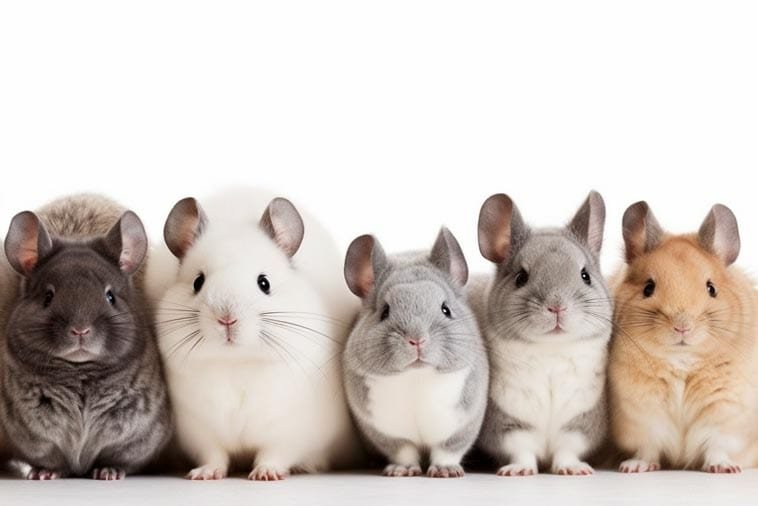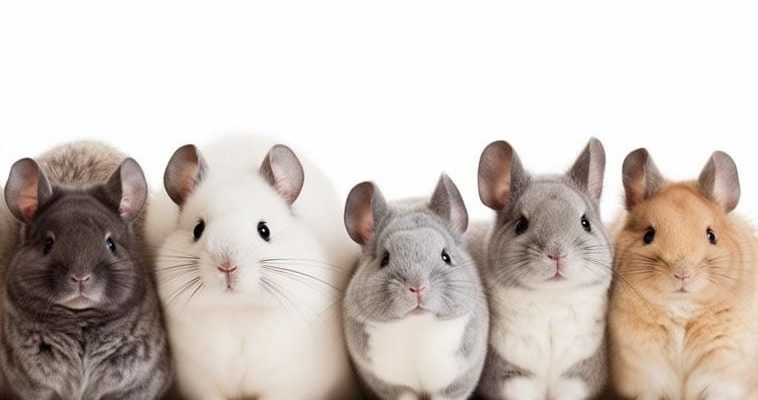
Beige chinchillas, in particular, have captured the hearts of many pet owners due to their stunning appearance. Their warm, sandy coats are as inviting as a cozy blanket on a chilly evening. But breeding these beauties isn’t just about aesthetics; it involves a mix of genetics and careful consideration to ensure healthy, vibrant offspring. Let’s dive into this captivating topic and unravel the mysteries of breeding and genetics in beige chinchillas.
What Makes Beige Chinchillas Unique?
First off, let’s talk about what defines a beige chinchilla. Unlike their more common gray cousins, beige chinchillas boast a gorgeous sandy-colored coat. This color arises from a specific genetic mutation that affects the pigmentation in their fur. Think of it like a painter who decided to mix in a bit of warmth to a canvas previously painted in cool tones.
This unique coat color is not just for show; it’s a result of a recessive gene, meaning both parents must carry this gene for their offspring to inherit the beige color. As a result, breeding beige chinchillas requires understanding these genetic traits deeply, similar to how a gardener learns which plants cross-pollinate to produce the most beautiful blooms.
In essence, beige chinchillas blend beauty with biology, making them a fascinating subject for anyone interested in genetics. Much like a chef crafting a recipe, breeders must combine specific elements to create the perfect offspring.
Understanding Genetic Inheritance
When it comes to breeding chinchillas, you’ll often hear terms like dominant and recessive genes thrown around. Here’s the scoop: a dominant gene is one that can overpower the effects of a recessive gene. In the case of beige chinchillas, the beige color is controlled by a recessive gene, so both parents must pass it along for the baby chinchilla to be beige.
Imagine a pair of chinchillas: one gray and one beige. If they breed and the gray chinchilla carries the beige gene (often referred to as a carrier), there’s a chance their offspring could inherit the beige coat. However, if both parents are gray and neither carries the beige gene, you won’t see that beautiful sandy color in their babies.
Punnett squares are a great tool to visualize this concept. They can help breeders predict the possible genetic outcomes of a litter, showing them the chances of producing beige offspring. It’s like a little crystal ball that offers insights into the genetic lottery!
Breeding Techniques for Success
Now that you’ve got a handle on the genetic side, let’s discuss some practical breeding techniques. It’s essential to choose healthy breeding pairs, as genetics don’t just dictate color; they also influence the overall health and temperament of the chinchillas.
Here are a few tips for breeding beige chinchillas successfully:
- Health Check: Always start with a thorough health assessment of potential breeding pairs. Look for signs of illness or genetic issues.
- Pedigree Knowledge: Maintain a detailed pedigree chart to track lineage. This helps avoid inbreeding and its associated complications.
- Temperature Control: Keep breeding chinchillas in a comfortable environment. Stress from extreme temperatures can affect their health and breeding success.
- Nutrition Matters: Feed pregnant or nursing females a rich diet with plenty of hay, pellets, and occasional treats to ensure they’re healthy and strong.
Using a careful approach can help ensure that your beige chinchillas not only look beautiful but also thrive in their environments.
Common Genetic Traits and Health Issues
Every breed has its quirks, and beige chinchillas are no exception. While they typically enjoy sturdy health, they’re still susceptible to certain genetic health issues. For instance, some chinchillas might experience dental problems, which can stem from their genetics, affecting their ability to chew properly.
Another thing to look out for is *chinchilla obesity*. While this isn’t strictly a genetic issue, it’s often exacerbated by poor breeding practices. If breeders don’t keep an eye on the lineage, they may inadvertently propagate traits that lead to health problems, including obesity.
Breeders must stay informed about these potential issues and be vigilant in their breeding practices. By prioritizing health and wellness, you can contribute to a lineage that’s not only beautiful in appearance but strong in health.
The Role of Color Genetics in Breeding
Color genetics is a fascinating subject, especially when it comes to chinchillas. The genes that influence coat color can bring a splash of variety to your breeding program. Aside from beige, chinchillas come in several other colors, like black, white, and mosaic.
Breeders often experiment with color combinations to achieve unique results. For instance, crossing a beige chinchilla with a standard gray can yield interesting color variations, but it’s crucial to remember the genetic implications of these crossings. Each combination of genes holds the potential for different outcomes, making breeding a thoughtful puzzle rather than a random chance.
Here’s the thing: color isn’t just about looks. The genes associated with coat color can also carry other traits, including temperament or health. Therefore, when breeding for a specific color like beige, it’s essential to consider the overall genetic package being passed on.
Raising Healthy Chinchilla Offspring
Once you’ve successfully bred beige chinchillas, the next step is raising healthy offspring. Newborn chinchillas are incredibly fragile and require specialized care. Here are some tips for providing the best start for your little ones:
- Safe Environment: Create a quiet, comfortable space away from loud noises or other pets that could stress out the mother and babies.
- Monitoring Development: Watch the babies closely for any signs of illness or distress. Early intervention can be crucial.
- Gradual Weaning: Start weaning around six weeks but monitor their food intake to ensure they’re getting enough nutrition as they transition.
- Socialization: As they grow, spend time handling the babies gently to help them develop a friendly and trusting temperament.
By providing attentive care during their early days, you set the stage for healthy, happy chinchillas.
Breeding beige chinchillas is a rewarding journey filled with science, art, and a lot of love. By understanding their genetics and employing careful breeding techniques, you can contribute to the breed’s beauty and health. Whether you’re thinking about starting your breeding program or just curious about these adorable creatures, the world of beige chinchillas offers endless fascination.
So, grab a cup of coffee (or your favorite drink) and take some time to delve deeper into this colorful adventure. Each little chinchilla is a unique blend of genetics, and with proper care, they can thrive beautifully in our lives. Enjoy the journey!

